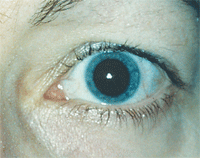Replacing visual acuity screenings with dilated eye exams for new Medicare enrollees is “highly cost effective,” according to a new study published online in Archives of Ophthalmology.

Visual acuity screening for new Medicare enrollees is a “suboptimal use of resources,” while dilated eye exams are more cost-effective, researchers found.
Photo: Ellen M. Petrilla, O.D.
Medicare currently reimburses visual acuity screening for new enrollees during their initial preventive primary care health check.
In this study, researchers used a cost-effectiveness simulation model with a total of 50,000 simulated patients with demographic characteristics matched to people 65 years old. The study results suggest that, compared with a no-screening policy, dilated eye evaluations increased quality-adjusted life years (QALYs) by 0.008 and increased costs by $94. A visual acuity screening increased QALYs in less than 95% of the simulations and increased total costs by $32 per person. At a willingness-to-pay value of $15,000 or more per QALY gained, a dilated eye evaluation was the policy option most likely to be cost-effective, researchers concluded.
In 2009, the U.S. Preventive Services Task Force reversed its 1996 recommendation in favor of visual acuity screening because of insufficient evidence to support it.
“Our results support the conclusions of the U.S. Preventive Services Task Force that … visual acuity screening in primary care settings cannot be demonstrated to result in meaningfully different outcomes than no screening,” researchers wrote.
They added, “Our research suggests that the current policy of visual acuity screening is a suboptimal use of resources and that replacing this policy with coverage of a dilated eye evaluation for all healthy patients entering Medicare would be highly cost-effective.”
Rein DB, Wittenborn JS, Zhang X, et al. The Cost-effectiveness of Welcome to Medicare visual acuity screening and a possible alternative Welcome to Medicare eye evaluation among persons without diagnosed diabetes mellitus. Arch Ophthalmol. 2012 Jan 9. [Epub ahead of print]

